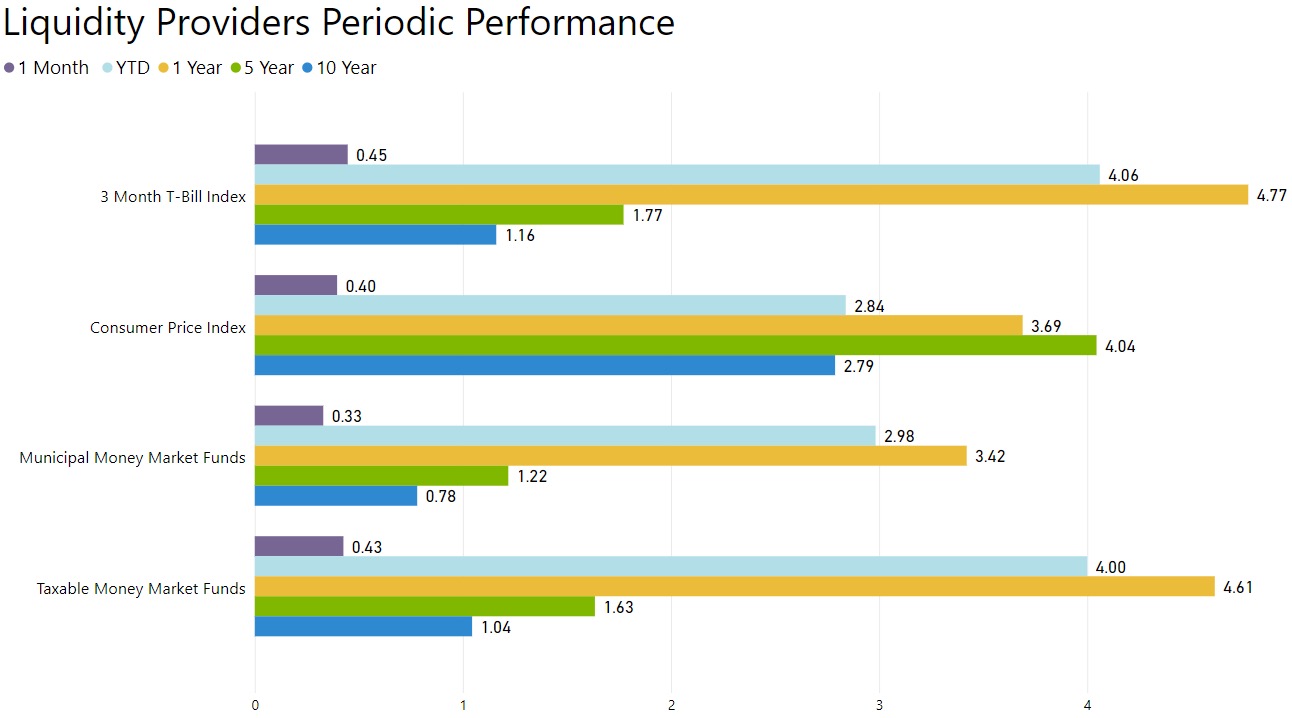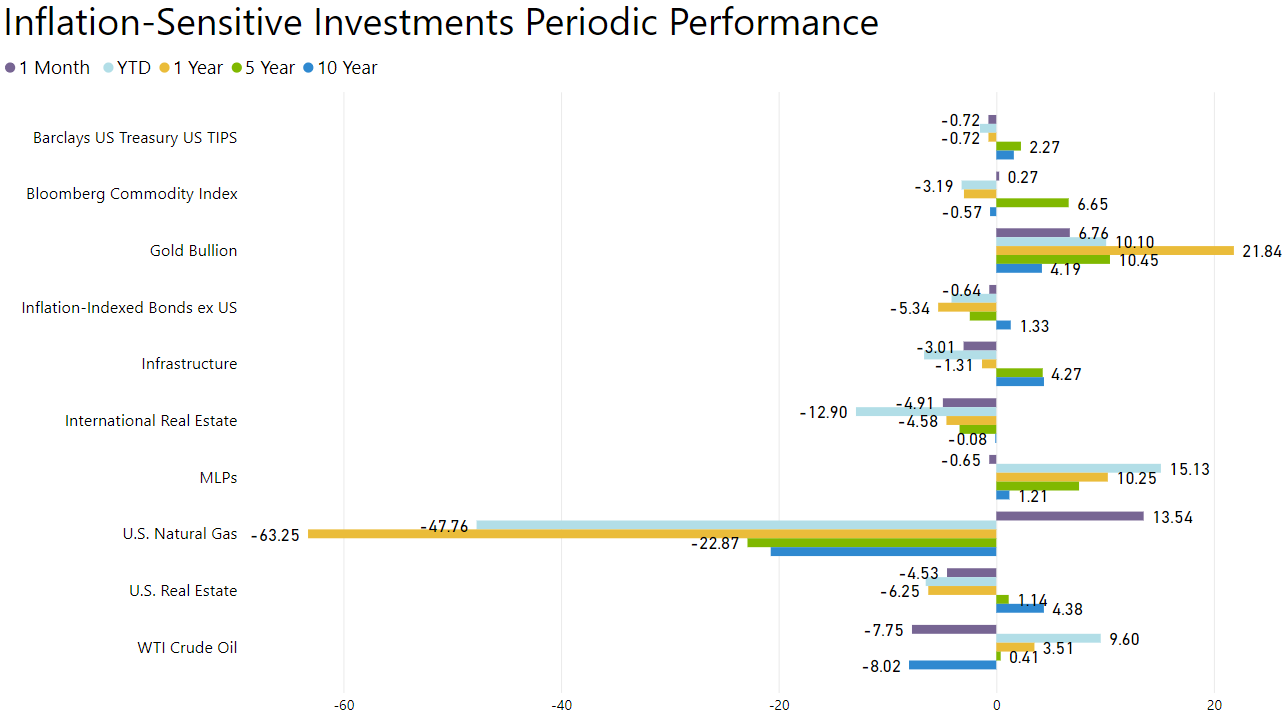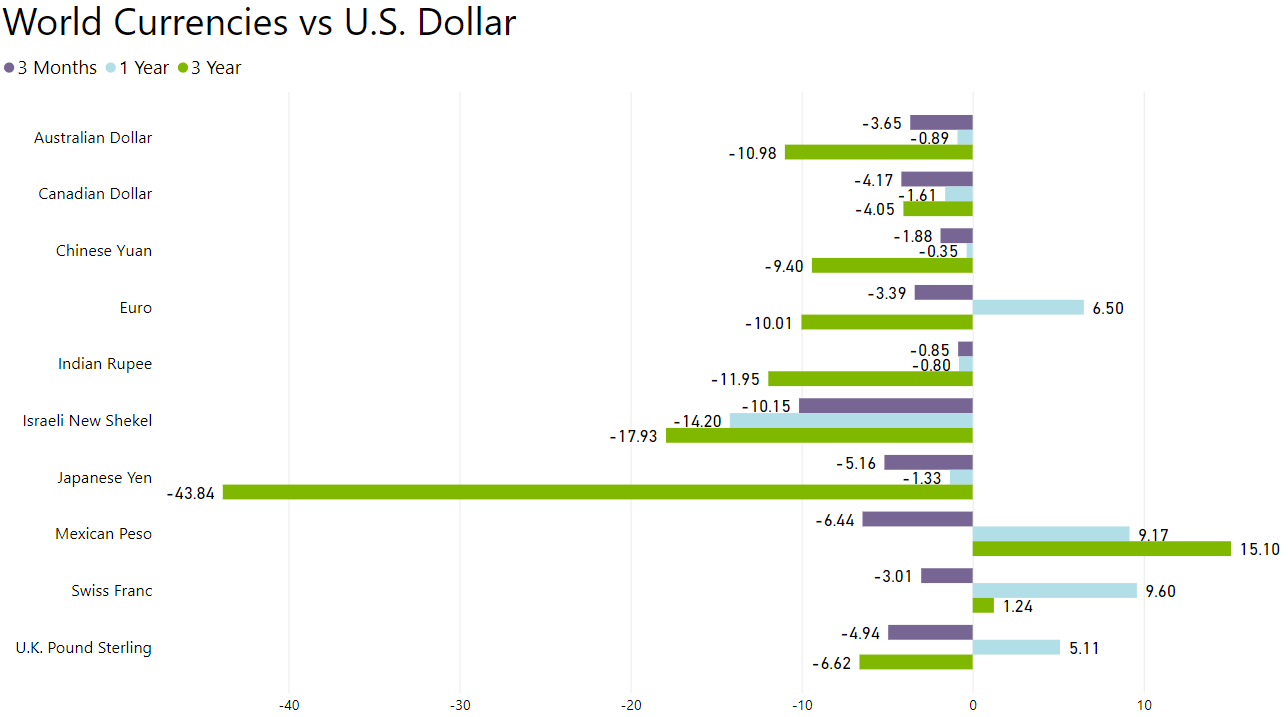Monthly Market Report: October 2023
Markets Decline in October
Prepared by Brandon Yee, CFA, CAIA, and Thomas Connelly, CFA, CFP
DEVELOPED MARKETS
International developed stock markets returned -4.22%. The U.S. and Europe ex UK recorded returns of -2.33% and -3.60%, respectively. Canada and Japan lagged other markets for the month. International developed markets are up 2.22% YTD, while the U.S. market is up 10.50%. The U.S. market is up YTD due to the rally in a handful of U.S. technology stocks and the expansion of valuation multiples. These U.S. technology companies will need to grow their earnings at a high rate to warrant these high valuations.

EMERGING MARKETS
Broader emerging markets posted a -3.79% return for the month. India and Brazil recorded returns of -2.97% and -3.73%, respectively. China’s economy expanded at a 5.25% annualized rate in Q3, above some expectations. Domestic services continued to be the main driver. However, its economy continues to be weighed down by weaker corporate capital expenditures and a shaky real estate sector. Near historic low valuations relative to the U.S. and international markets may help emerging market investors going forward.

GLOBAL SECTOR
Utilities and Information Technology Outperform
Utilities and information technology recorded returns of 0.67% and -0.33%, respectively, in October. Energy and consumer discretionary lagged other sectors this month. The information technology sector is up 30.12% YTD. Much of the rally in this sector has been driven by a small number of mega-cap technology companies. If central banks maintain restrictive monetary policy, higher cost of debt and high valuations could create a tough environment for the information technology sector.

DOMESTIC EQUITY FACTORS
Value Stocks Mixed
In October, value underperformed growth in the large-cap space but outperformed in the small-cap space. Momentum recorded a return of -1.98%. Value stocks across the world continue to trade at large discounts relative to growth stocks. Value-oriented sectors such as energy, financials, and materials have underperformed this year after a strong performance in 2022.

FOREIGN EQUITY FACTORS
Value Holding Steady YTD in International Markets
In the international developed markets, value underperformed growth in the large-cap space but outperformed in the small-cap space for the month. Momentum recorded a return of -2.68%, while small-cap emerging market stocks posted a return of -4.54%. The YTD performances of value stocks and growth stocks are diverging in favor of value. Small-cap value stocks have outperformed small-cap growth stocks YTD and over the past five years. Value stock valuations are still very low relative to growth stocks in both international developed and emerging markets, which is consistent with the US market. Rising interest rates may also pose more of a risk to growth stocks than value stocks.

LIQUIDITY PROVIDERS
Savers Benefitting from Higher Interest Rates
In October, the three-month Treasury bill index returned 0.45%. From the beginning of 2022 through the end of October 2023, the annualized interest rate on the 90-day Treasury bill increased from 0.08% to 5.53%. Savers are now getting paid much more interest. Real interest rates are positive, with the CPI increasing by 3.69% over the past year through the end of September.

DISINFLATION DEFLATIONARY HEDGES
Short-Duration Fixed Income Investments Positive for the Month
The returns of deflationary hedges were mostly negative for the month except for short-duration fixed income investments. The Bloomberg Barclays U.S. Agg Bond Index returned -1.58% for the month. In October, short-term government and short-term municipal bonds recorded returns of 0.10% and 0.06%, respectively. Catastrophe bonds are up 17.34% YTD. Insurance-linked securities like catastrophe bonds are benefiting from higher premiums that insurance companies are demanding from buyers. The higher premiums are a result of the larger realized losses in recent years experienced by the insurance companies. Longer duration fixed income was negatively impacted by rising interest rates demanded by bond market participants.

INFLATION SENSITIVE INVESTMENTS
Inflation-Sensitive Investments Mixed
Inflation-sensitive investment returns were mixed for the month. U.S. natural gas and gold bullion returned 13.54% and 6.76%, respectively, in October. U.S. and international real estate were down -4.53% and -4.91%, respectively. The Bloomberg Commodity index posted a return of 0.27%. Gold bullion is up 10.10% YTD even though short-term interest rates and real yields continue to rise. Many emerging market central banks have been steady buyers of gold bullion in recent years. As geopolitical risks increase and become more interconnected, gold bullion may serve as a safe haven.

WORLD CURRENCIES
U.S. Dollar Strengthens Versus Other Currencies
Over the past three months, the U.S. dollar appreciated against all major world currencies. Over the past year, the U.S. dollar strengthened against the Japanese Yen, Australian dollar, and Chinese Yuan. The continuation of U.S. fiscal and trade deficits may weigh on the U.S. dollar in the medium-term to long-term. Gross federal debt to GDP stands at 120% and is forecasted to increase throughout the decade. In addition, the fiscal deficit is 6.4% of GDP at a time of economic expansion and low unemployment.


Brandon conducts investment due diligence for Versant Capital Management, and designs and implements tools and processes to support the firm’s research. His background in biology and finance help him to look at challenges from multiple angles, resulting in unique and well-rounded approaches and solutions.
Please remember that past performance may not be indicative of future results. Different types of investments involve varying degrees of risk, and there can be no assurance that the future performance of any specific investment, investment strategy, or product (including the investments and/or investment strategies recommended or undertaken by Versant Capital Management, Inc.), or any non-investment related content, made reference to directly or indirectly in this article will be profitable, equal any corresponding indicated historical performance level(s), be suitable for your portfolio or individual situation, or prove successful. Due to various factors, including changing market conditions and/or applicable laws, the content may no longer be reflective of current opinions or positions. Moreover, you should not assume that any discussion or information contained in this article serves as the receipt of, or as a substitute for, personalized investment advice from Versant Capital Management, Inc. To the extent that a reader has any questions regarding the applicability of any specific issue discussed above to his/her individual situation, he/she is encouraged to consult with the professional advisor of his/her choosing. Versant Capital Management, Inc. is neither a law firm nor a certified public accounting firm and no portion of the article content should be construed as legal or accounting advice. If you are a Versant Capital Management, Inc. client, please remember to contact Versant Capital Management, Inc., in writing, if there are any changes in your personal/financial situation or investment objectives for the purpose of reviewing/evaluating/revising our previous recommendations and/or services. A copy of the Versant Capital Management, Inc.’s current written disclosure statement discussing our advisory services and fees is available upon request.
